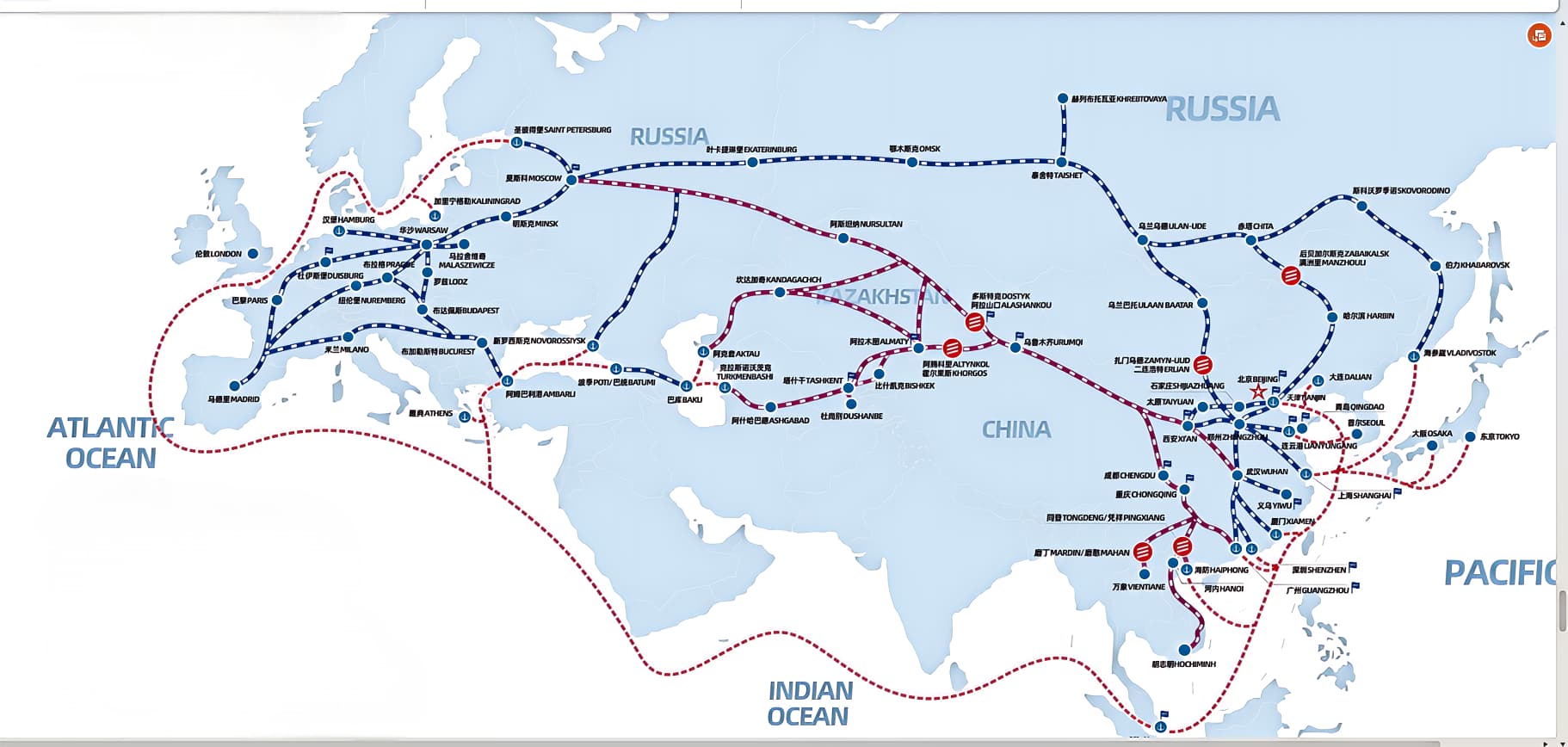China-Europe Freight Train: Common Questions and Answers

1. Is the China-Europe Freight Train a Chinese Train Running All the Way to Europe?
Not exactly. Chinese trains only run to the China-Kazakhstan border. Strictly speaking, the trains extend a short distance into Kazakhstan, where the containers are transferred to another train operated by Kazakhstan. Then the Chinese train returns to its original route.
Due to the difference in track gauges between China's standard gauge and the wide gauge used by CIS countries, the track gauge needs to be changed at the China-Kazakhstan border. Within the CIS countries, locomotives and drivers are also changed as needed, switching to local locomotives and personnel. The CIS wide-gauge railway ends at the EU border, requiring another transfer to EU-standard locomotives.
Therefore, the trains that arrive in Europe are all European trains.
If standard gauge were implemented all the way to Europe, and Chinese trains could technically run to Europe, numerous challenges would arise. For example, how many drivers would be required for the journey? How many languages would the drivers need to know? They would need to interpret and follow various signals and instructions. Currently, a Polish driver can drive into Germany, but they need a special license for specific routes. A new license is required for a different route.
Additionally, the standard voltage differs across countries. For a German train to enter a country with a different voltage standard, it would need a system compatible with the local voltage. Therefore, it is very challenging for a single train to operate continuously over the 10,000 km route. Many locomotives and drivers must relay along the way.
2. Why Does the Average Speed of the China-Europe Freight Train Fall Below 30 km/h?
In theory, with current high-speed train technology (300 km/h), the 10,000 km journey would take only a day and a half. However, the key is the word "average."
For most of the route, the trains travel at speeds exceeding 100 km/h. However, they must stop at several points, such as Alashankou and Malaszewicze, for tasks like changing track gauges, customs clearance, and replacing railway waybills. If the total journey takes 16 days, 4–5 days are spent stationary, leaving only 11–12 days of actual travel. Averaged over the entire journey, the speed drops to below 30 km/h.
3. How Long Are the China-Europe Freight Trains? Do Standards Differ Across Countries?
Russia operates the longest trains, up to 1,500 meters, capable of carrying 75 forty-foot containers. The shortest trains are in Germany, only 650 meters long, which can carry 41 forty-foot containers—the standard length for most China-Europe freight trains.
Germany often faces criticism for its "short" trains. Many German rail yards have tracks no longer than 650 meters. Operating costs for trains of different lengths are nearly the same, so longer trains are more efficient, transporting more goods with similar power requirements.
In contrast, the U.S. uses double-stack containers for greater efficiency. Other European countries, such as the Netherlands, are trying to improve efficiency by adopting 750-meter trains. However, infrastructure upgrades are needed to accommodate longer trains, and progress is slow due to governmental inefficiency. Without such changes, 750-meter trains cannot be fully utilized.
European countries also need to standardize their systems. If Germany and Poland have different standards, trains still need to transfer at the border, negating efficiency. A unified EU standard is essential for progress.
4. Do China-Europe Freight Trains Only Use the Blue Containers from China Railway?
On June 8, 2016, China Railway officially launched the unified China-Europe Freight Train brand. Trains departed from Chongqing, Chengdu, Wuhan, Zhengzhou, Suzhou, and Yiwu under this unified brand, which features a logo incorporating elements like a speeding train and a fluttering silk ribbon.
The blue containers are just one part of the available container supply. Other containers are provided by companies like Maersk, COSCO Shipping, and other major railway companies.
5. Can China-Europe Freight Trains Transport Refrigerated Containers, Hazardous Goods, or Express Parcels?
Some refrigerated containers are provided by Unite 45, a Dutch company, but their use remains unstable. These containers require special diesel fuel for cooling, and refueling along the route is unreliable. Each container's temperature must be manually set, requiring significant time and effort.
Currently, hazardous goods like car airbags and lithium batteries cannot be transported on China-Europe trains. Liquid goods can be transported on certain routes. In China, hazardous goods are primarily transported by truck, while in Europe, the opposite is true.
Reforms are underway in China to allow hazardous goods transport by rail, which would require new safety technologies and packaging solutions. Once approved, the growing electric vehicle market could benefit significantly.
China-Europe freight trains cannot transport express parcels as they primarily serve businesses (B2B). Parcel transport involves complex regulatory issues across multiple countries, which makes it unfeasible at present.
6. Why Do Most China-Europe Freight Trains Exit Through Alashankou Instead of Manzhouli?
The main factor is geography. Alashankou offers the shortest exit route, while the northern route through Manzhouli is about 2,000 km longer.
Additionally, most China-Europe freight trains originate from central and western cities like Chongqing, Xi'an, and Chengdu. Alashankou is the nearest border crossing for these regions, making it the most practical choice.

